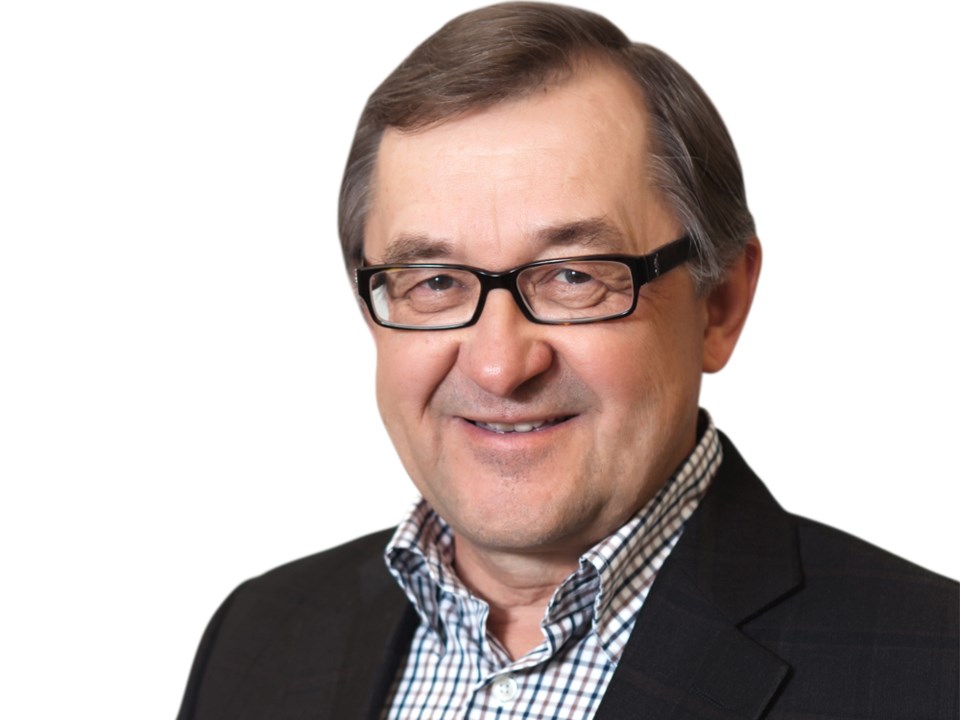For the past week, we’ve been learning more and more about what happened on Parliament Hill on Oct. 22.
A gunman shot and killed Cpl. Nathan Cirillo, who was standing guard at the Canadian War Memorial, and then stormed the Parliament Building where he was shot and killed in a fight with security forces.
Estevan’s Ed Komarnicki was in the Conservative Party caucus meeting representing the constituency of Souris-Moose Mountain as MP when the events unfolded. In the meeting just off the hall where the gunfight happened, Komarnicki huddled up with his Conservative peers where they barricaded the door to prevent entry and waited for news.
“You think that something like this could happen,” said Komarnicki about some sort of an attack at Parliament. “But you certainly don’t expect it to happen.”
He said they hear noises from time to time throughout the Parliament Building, so “you don’t react, but I think when the rapid fire shots were heard inside the room, there’s no doubt people knew something was wrong. The first instinct is to get out. I’m not sure that’s wise, but that is the instinct.
“When I was in caucus I heard a boom or booms and thought that was an unusual sound. Then I heard live fire like pops from a handgun, and I realized something untoward was happening outside. I heard more shots and there were quite a few of them, so the first thought is who is firing and why are they firing?”
The shots were being fired in the hall just outside the Conservative caucus meeting room where Komarnicki was. The questions came fast, and there were lots of them. Some would be answered before long but not all.
“The first reaction is what’s going on? Obviously it was something bad not good. Who’s firing? How many people are in the building? What does it mean to us in the room? The first reaction is to leave the room if you could, and I think security thought it would be best to just lock the doors to prevent them from coming in.”
So they stayed in the caucus room, locking and barricading the door with furniture.
“The height of the tension was wondering who’s involved? How many? And what can you do?” said Komarnicki. Those were the unanswered questions the MPs were waiting to learn inside Parliament, while Canadians everywhere waited for the same answers.
“The biggest concern was in the next 15, 20 minutes, while you were sizing up what the situation was. It was fair to say those of us inside had the view that if somebody’s coming through, if it’s one we can probably do something about that. If there’s more than one, then there’s probably nothing you can do, especially if they’re armed. You just, sort of, wait and see what happens.”
After time passed, he said the tension inside the caucus room went down.
Security went from room to room throughout the building, scouring offices, and in some cases, breaking into rooms in order to complete a full assessment of the situation. Nobody else was found and after the confusion made way for greater clarity of the events, it was determined by police to be a lone gunman.
Komarnicki was among his Conservative Party peers for the remainder of the day, sitting tight until about 6 o’clock that evening, when they were permitted to leave Parliament.
Not long after the final shots were fired, the MPs were briefed by Kevin Vickers, the sergeant-at-arms, who said the person who had gained entry was shot dead.
“The thoughts that I’ll mostly remember for a long time is hearing the shots and also walking out, being escorted out of the House, with what appeared to be sharp shooters around and a row of heavily-armed personnel who formed an alley between the building and the bus.”
Komarnicki said going back the next day and sitting in the House of Commons was therapeutic for the MPs and for him in particular.
“I would say the mood in the place was jubilant, not celebratory, but in some sense defiant that we’re here, that we’re not going to be cowered and we’re going to move forward.”
Komarnicki said partisanship was torn down temporarily within the House, as the MPs came together as colleagues of the Canadian stripe, rather than combatants of varying political views.
“You get to know people from the other parties, and like the prime minister said, we maybe have differences of opinion, and we may make remarks that others don’t like, but we’re not enemies.”
“You have to think about what could have been. It could have been far more serious if the gunman entered our room. You have to think of the families of those who have actually lost loved ones in what occurred, both off the grounds and a few days earlier. Those are traumatic things that you can’t downplay.”
While there aren’t answers to how this event will affect specific change in the country, Komarnicki said he is of the view there must be some review of security and protocols.
“Our security has to be such that it can deal with one, or in my view, 10 or 15 people. At the same time, when you come down to Ottawa, you have people milling around and tourists throughout the House, and people on the grounds. That’s a nice thing, and it’s a good thing, and you have to balance that off. You don’t want to curtail that aspect of the House being open.”



